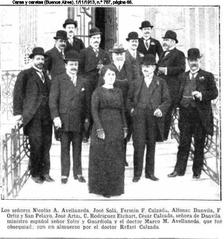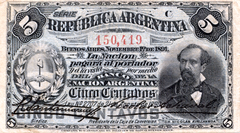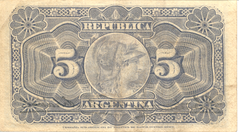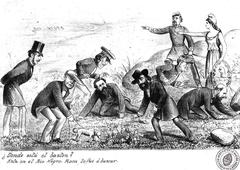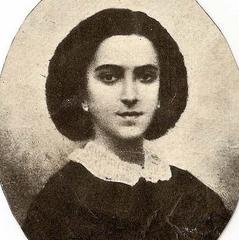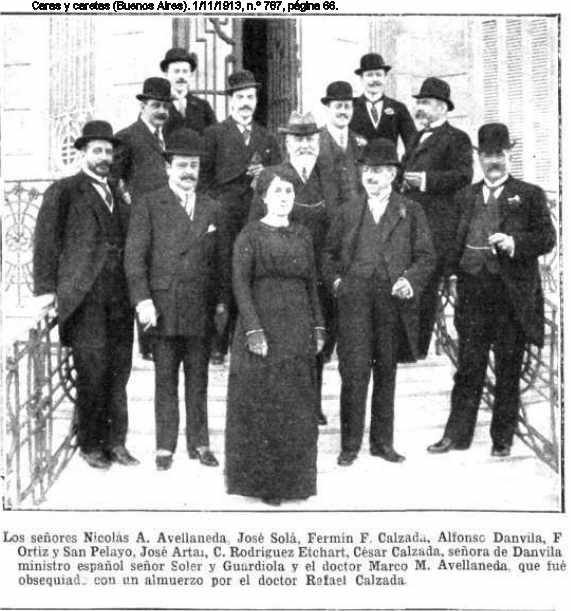
Nicolás Avellaneda Visiting Hours, Tickets, and Historical Sites in Buenos Aires
Date: 14/06/2025
Introduction to Nicolás Avellaneda Historical Sites in Buenos Aires
The Nicolás Avellaneda district and its landmarks offer a compelling journey through Argentine history, innovation, and community life. At the heart of this district is the Puente Transbordador Nicolás Avellaneda—a historic transporter bridge inaugurated in 1914. This unique structure once played a crucial role, linking the port neighborhood of La Boca with the industrial suburb of Isla Maciel in Avellaneda, and stands as a symbol of Buenos Aires’ industrial heritage and communal resilience (Wikipedia: Puente Transbordador).
Named after Nicolás Avellaneda, Argentina’s president from 1874 to 1880, the district reflects his legacy of modernization, education reform, and immigration policies that have profoundly shaped the country (Wikipedia: Nicolás Avellaneda). Today, visitors can explore not only the iconic bridge but also several cultural centers, green spaces like Parque Avellaneda, historical sites such as El Olimpo, and enjoy community-driven festivals. From street art and local cuisine to significant monuments, Nicolás Avellaneda is a vibrant destination for travelers seeking an authentic Argentine experience.
This guide provides detailed information on visiting hours, ticketing, accessibility, and special events at Nicolás Avellaneda’s historical and cultural sites. Whether you’re planning a day trip or a longer stay, use this resource to get the most out of your exploration of this dynamic Buenos Aires district (Buenos Aires Tourism, Expat Pathways).
Table of Contents
- Introduction: Buenos Aires’ Industrial Gem
- Nicolás Avellaneda: Historical Overview and Legacy
- The Puente Transbordador Nicolás Avellaneda: Engineering Marvel
- The Bridge’s Role in Buenos Aires’ Urban and Cultural Landscape
- Practical Information for Visitors
- Visiting Tips and Frequently Asked Questions
- Discovering Avellaneda: Visiting Hours, Tickets, and Historical Sites
- The Avellaneda Monument: History, Visiting Info, and Events
- Planning Your Visit: Itinerary, Safety, Currency, and More
- Summary and Visitor Recommendations
- References and Further Reading
Visiting the Puente Transbordador Nicolás Avellaneda: History, Tickets, and Guide
Nicolás Avellaneda: Historical Overview and Legacy
Nicolás Avellaneda (1837–1885) served as president of Argentina from 1874 to 1880. His administration was marked by reforms in education, expansion of the railway network, and policies that encouraged European immigration—developments that reshaped Argentina’s social fabric (Wikipedia: Nicolás Avellaneda). The Avellaneda district, as well as important infrastructure like the transporter bridge, are named in his honor, underlining his enduring impact on the nation’s history and geography.
The Puente Transbordador Nicolás Avellaneda: Engineering Marvel
Conception, Construction, and Inauguration
The Puente Transbordador Nicolás Avellaneda was conceived to improve connections across the Riachuelo River, separating La Boca from Isla Maciel (Wikipedia: Puente Transbordador). Built by the Buenos Aires Great Southern Railway, the bridge’s iron structure was manufactured in the UK and assembled in Buenos Aires. It features deep concrete foundations and a corrosion-resistant design. The bridge was inaugurated on May 31, 1914, with a platform that could carry pedestrians, vehicles, and trams.
Urban Impact, Obsolescence, and Restoration
For decades, the transporter bridge was the only fixed link between Buenos Aires and Avellaneda, fostering economic and social integration. However, the construction of a new road bridge in 1940 led to its decline, and by 1960 the transporter bridge ceased operations (Buenos Aires Tourism). In the late 20th century, it faced demolition, but community activism saved it. In 1999, it was declared a National Historic Monument, and restoration efforts culminated in its reopening in 2017 (Buenos Aires City Government).
The Bridge’s Role in Buenos Aires’ Urban and Cultural Landscape
The Puente Transbordador is more than an engineering feat—it physically and symbolically connects La Boca’s vibrant, immigrant-rich community with Avellaneda’s industrial past. It has inspired artists, writers, and photographers, and today is a must-see for those interested in the history and evolution of Buenos Aires (Buenos Aires Tourism).
Practical Information for Visitors
Location and Access
- Address: At the mouth of the Riachuelo River, linking Avenida Almirante Brown (La Boca) with Avenida La Plata (Isla Maciel).
- Public Transport: Bus lines 29, 33, 152; nearby Constitución train station connects to Avellaneda.
- Access: The modern road bridge nearby allows pedestrian crossings.
Visiting Hours and Tickets
- Hours: Tuesday–Sunday, 10:00 AM–6:00 PM; closed Mondays and public holidays.
- Tickets: Free entrance to the bridge; guided tours may have a fee.
- Tours: Available weekends and by appointment; include history and bridge operation.
- Accessibility: Partial wheelchair access (La Boca side); some areas are less accessible due to the bridge’s historic nature.
Special Events and Virtual Tours
Cultural events, such as tango performances and art exhibitions, occasionally take place on or near the bridge. Official websites and local event listings provide updates. Virtual tours are available online for remote visitors.
Visiting Tips
- Best Time: Mornings for safety and photography.
- Photography: Excellent opportunities with the bridge’s ironwork and colorful surroundings.
- Nearby Attractions: Caminito street museum, local cafés, and taverns (Expat Pathways).
- Safety: Remain aware, especially in less touristy Isla Maciel.
Frequently Asked Questions (FAQ)
-
Q: Is the bridge open daily?
A: No, it is closed on Mondays and public holidays. -
Q: Are tickets required?
A: Entrance is free; guided tours may require a small fee. -
Q: Is it wheelchair accessible?
A: There is partial accessibility; some areas may be difficult. -
Q: How do I get there?
A: Bus lines 29, 33, and 152; nearest train station is Constitución.
Discovering Avellaneda: Visiting Hours, Tickets, and Historical Sites
Historical and Cultural Landmarks
Parque Avellaneda
- Hours: Daily, 6:00 AM–8:00 PM
- Admission: Free
- Features: Gardens, woodlands, historic buildings, walking paths, and seasonal events.
Casona de los Olivera
- Hours: Tuesday–Sunday, 10:00 AM–6:00 PM
- Admission: Free; special exhibitions/workshops may have a fee
- Tours: Weekends; book in advance
Antiguo Tambo
- Hours: Tuesday–Sunday, 10:00 AM–5:00 PM
- Activities: Children’s theater, educational workshops, some ticketed events
El Olimpo – Former Detention Center
- Hours: Wednesday–Sunday, 11:00 AM–4:00 PM
- Admission: Free (donations welcome)
- Booking: Guided tours mandatory; reserve in advance
Community and Cultural Life
- Festivals: Annual “Light of Fire” in June, open-air concerts, artisan markets
- Murals/Urban Art: Walking tours available
Recreational Spaces and Family Activities
- Carousel (La Calesita): Weekends/holidays, 11:00 AM–6:00 PM
- Sports Facilities: Soccer, basketball, running, cycling (open daily)
Religious and Architectural Sites
- Parroquia Nuestra Señora de la Asunción: Masses Sunday, 10:00 AM & 6:00 PM; visiting 9:00 AM–7:00 PM
- Architectural Tours: Book in advance for weekend tours
Gastronomy and Local Cuisine
- Parrillas and Cafés: Traditional Argentine dishes
- Food Festivals: “Sabor a Buenos Aires” in spring
Visitor Tips
- Transport: Bus, Subte Line A, and cycling paths available
- Best Season: Spring and autumn for pleasant weather
- Accessibility: Major sites are wheelchair accessible
Visuals and Media
Explore official virtual tours and images with alt text on Buenos Aires tourism platforms.
Notable Nearby Attractions
- Flores and Mataderos: Neighborhoods with local character
- City Center: Plaza de Mayo, National History Museum
Introduction to the Avellaneda Monument
Located in Avellaneda’s main square, the Monument to Nicolás Avellaneda commemorates the former president’s role in Argentina’s development. Inaugurated in the early 20th century, it is a focal point for civic celebrations and a testament to the city’s industrial and social evolution.
Visiting Information
- Location: Central Avellaneda, accessible by bus and Roca Line train
- Hours: Monday–Friday 9:00 AM–6:00 PM; Saturday–Sunday 10:00 AM–4:00 PM; closed national holidays
- Admission: Free; guided tours available weekends/public holidays (book in advance)
- Accessibility: Wheelchair accessible
Events
Annual festivities include San Martín de Tours, Labor Day parades, and cultural fairs.
Related Sites
- Avellaneda Railway Station: Historic transit hub
- Swift Factory Museum: Labor and industrial history
- Local Theaters and Museums: Preserving artistic heritage
For more: Avellaneda Historical Sites Guide
Planning Your Visit: Practical Information
Location and Accessibility
- Main Entry Points: Puente Nicolás Avellaneda, Avellaneda Train Station (Puentes Transbordadores)
- From Airports: Ezeiza (1–1.5 hours), Aeroparque (30 minutes)
Hours and Ticketing
- Puente Transbordador: Daily 9:00 AM–6:00 PM; gondola weekends/holidays 10:00 AM–4:00 PM (ARS 150 adults)
- Avellaneda Theatre: Tuesday–Sunday 10:00 AM–8:00 PM (ticketed shows/tours)
- Plazas: Open year-round, free
Best Time to Visit
Spring and autumn offer ideal weather and vibrant local events (Secrets of Buenos Aires).
Safety and Etiquette
- Follow standard urban precautions
- Greet locals and respect football enthusiasm
Currency, Payments, and Language
- Currency: Argentine peso; bring dollars/euros for exchange
- Cards: Widely accepted, but cash preferred in small shops
- Language: Spanish; basic English in tourist zones
Connectivity and Essentials
- SIM cards: Movistar, Claro, Personal
- Electricity: 220V; universal adapter needed (Short Girl On Tour)
- Wi-Fi: Available in key public venues
Food and Local Transport
- Dining: Try parrillas, bakeries, and street food
- Transport: SUBE card for buses, trains; taxis, ride-shares available
Suggested Itinerary
- Morning: Puente Transbordador and La Boca’s Caminito (Triplyzer)
- Midday: Plaza Alsina, local parrilla lunch
- Afternoon: Avellaneda Theatre, Parque Lezama
- Late Afternoon: Optional football stadium tour, Barracas street art
- Evening: Dinner and tango in La Boca/San Telmo
Frequently Asked Questions
-
Q: What are the bridge hours?
A: 9:00 AM–6:00 PM; gondola 10:00 AM–4:00 PM weekends/holidays. -
Q: Are tickets required for the bridge?
A: Yes, gondola rides require a ticket (ARS 150 adults). -
Q: How do I get to Avellaneda?
A: Roca Line train, bus, taxi, or ride-share. -
Q: Is Avellaneda safe?
A: Safe during the day; exercise usual precautions at night.
Summary and Visitor Recommendations
Nicolás Avellaneda is a vibrant testament to Buenos Aires’ layered history—from the restored Puente Transbordador and tranquil parks to poignant memorials and lively festivals (Wikipedia: Puente Transbordador, Buenos Aires City Government). Accessible, affordable, and rich in culture, it welcomes visitors eager to explore Argentina’s heritage. For the latest information on events and tours, refer to official tourism resources and mobile apps like Audiala (Buenos Aires Tourism, Time Out Buenos Aires).
References and Further Reading
- Buenos Aires City Government: Puente Transbordador Nicolás Avellaneda
- Wikipedia: Puente Transbordador
- Wikipedia: Nicolás Avellaneda
- Time Out Buenos Aires events calendar
- Avellaneda Historical Sites Guide
- Triplyzer: Things to do in Avellaneda
- Expat Pathways: Caminito, La Boca
- Buenos Aires Tourism Official Site
- Secrets of Buenos Aires Travel Checklist
- Short Girl On Tour: Tips for Visiting Buenos Aires
